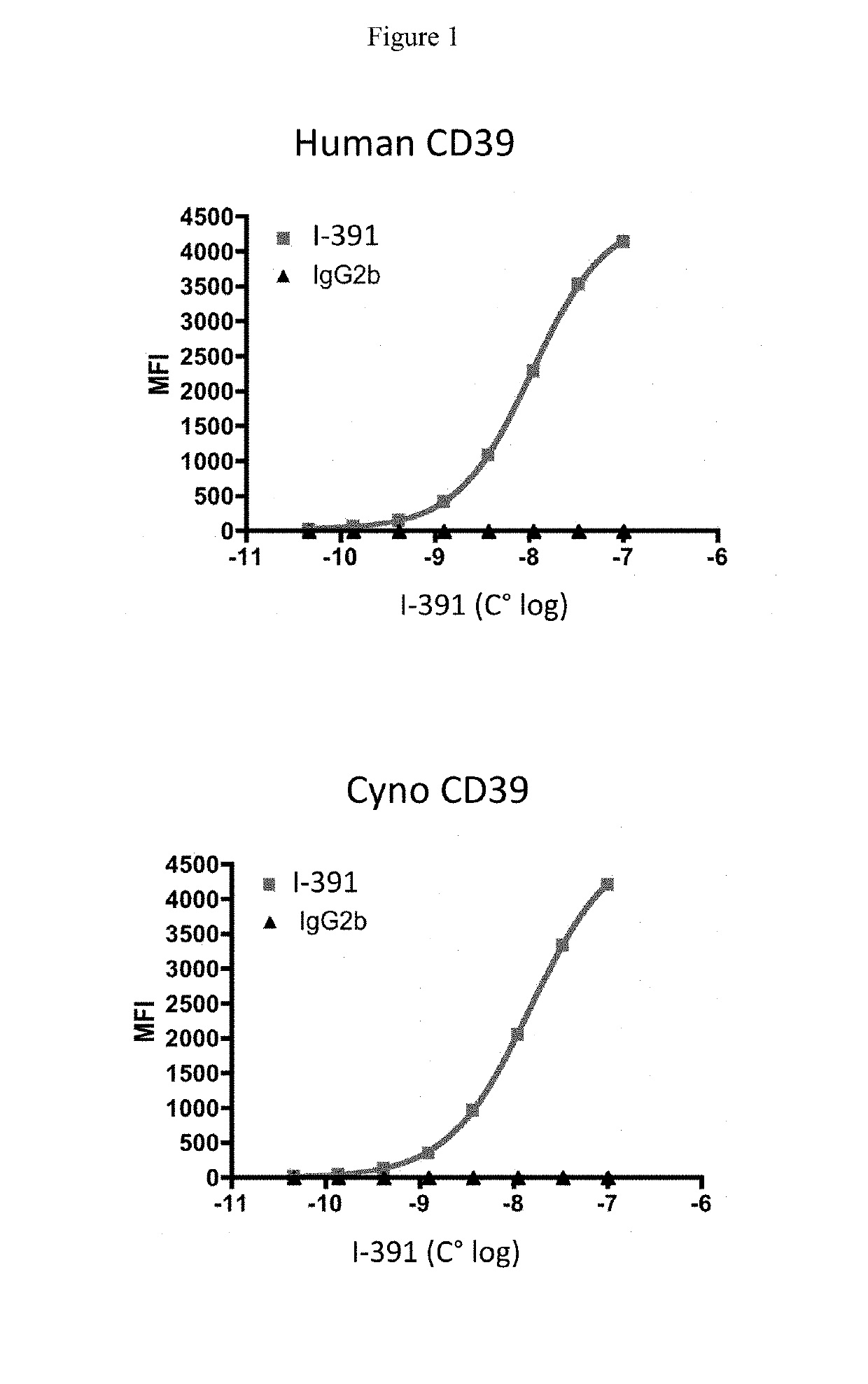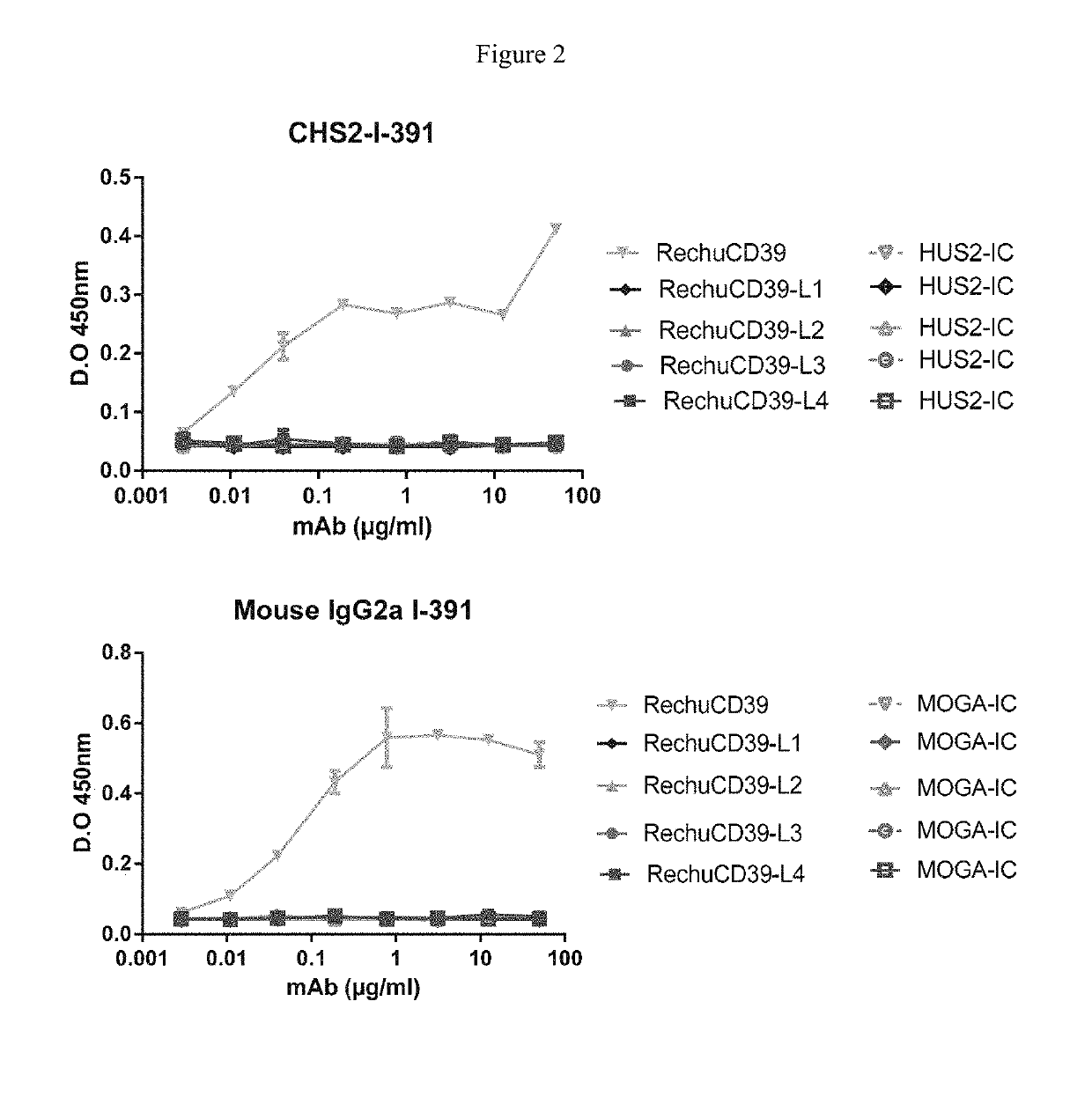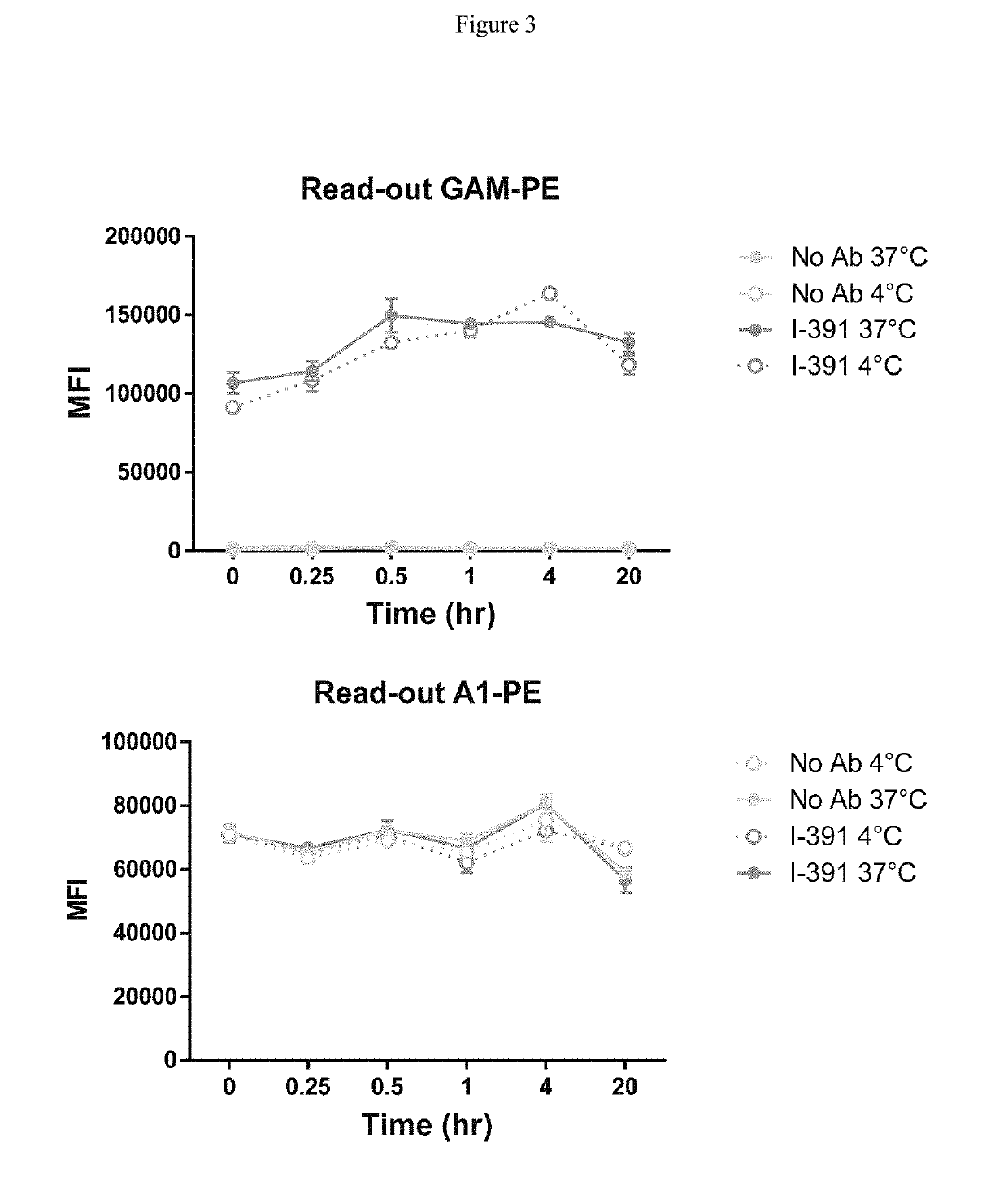Cd39 vascular isoform targeting agents
a vascular isoform and targeting agent technology, applied in the field of antigen-binding compounds, can solve the problems of difficulty in maintaining continuous antibody-mediated receptor saturation, and achieve the effects of reducing binding, reducing the ability of the fc domain (or antibodies), and increasing or ameliorating in vivo and/or in vitro stability
- Summary
- Abstract
- Description
- Claims
- Application Information
AI Technical Summary
Benefits of technology
Problems solved by technology
Method used
Image
Examples
example 1
n of New Anti-huCD39 Antibodies
[0568]Cloning, Production and Purification of huCD39
[0569]Molecular Biology
[0570]The huCD39 protein was cloned from human PBMC cDNA using the following primers TACGACTCACAAGCTTGCCGCCACCATGGAAGATACAAAGGAGTC (SEQ ID NO: 60) (Forward) and CCGCCCCGACTCTAGATCACTTGTCATCGTCATCTTTGTAATCGACATAGGTGGAGTGG GAGAG (SEQ ID NO: 61) (Reverse). The purified PCR product was then cloned into an expression vector using the InFusion cloning system. A M2 tag was added in the C-terminal part of the protein for the purification step.
[0571]Expression and Purification of the huCD39 Proteins
[0572]After validation of the sequence cloned, CHO cells were nucleofected and the producing pool was then sub-cloned to obtain a cell clone producing the huCD39 protein. Supernatant from the huCD39 clone grown in roller was harvested and purified using M2 chromatography column and eluted using the M2 peptide. The purified proteins were then loaded onto a S200 size exclusion chromatography col...
example 2
n of Antibodies I-391 and I-392 as Mutated Human IgG1
[0576]Antibody I-391 having the VH and Vk variable regions shown in SEQ ID NOS 6 and 7, respectively was produced as an Fc silent recombinant chimeric human IgG1 antibodies with a heavy chain N297Q (Kabat EU numbering) mutation which results in lack of N-linked glycosylation and reduces binding to human Fcγ receptors CD16A, CD16B, CD32A, CD32B and low residual binding to CD64.
[0577]Briefly, the VH and Vk sequences of the I-391 antibody were cloned into expression vectors containing the huIgG1 constant domains (harbouring the N297Q mutation) and the huCk constant domain respectively. The two obtained vectors were co-transfected into the CHO cell line. The established pool of cell was used to produce the antibody in the CHO medium. The antibody was then purified using protein A. The amino acid sequences of the respective heavy and light chains of I-391 are shown below. Antibody I-392 was produced in the same way using the same huIgG...
example 3
ion on Rec CD39 Protein by Flow Cytometry
[0578]Antibody I-391 was tested for binding to soluble recombinant human and cynomolgus CD39. Briefly, 1×105 HEK-huCD39or cynoCD39 cells were incubated with various concentration of unlabeled anti-CD39 antibody or isotype control (IC) from 99 nM to 0.045 nM, for 30 minutes at 4° C. After washes, cells were incubated with Goat anti-mouse H+L labeled secondary antibody for 30 min at 4° C.
[0579]Results are shown in FIG. 1. Antibody I-391 bound both human and cynomolgus vascular CD39. EC50 values for binding to human CD39 was 14.9 nM while binding to cynomolgus CD39 was 10.6 nM.
PUM
| Property | Measurement | Unit |
|---|---|---|
| concentration | aaaaa | aaaaa |
| concentration | aaaaa | aaaaa |
| concentration | aaaaa | aaaaa |
Abstract
Description
Claims
Application Information
 Login to View More
Login to View More - R&D
- Intellectual Property
- Life Sciences
- Materials
- Tech Scout
- Unparalleled Data Quality
- Higher Quality Content
- 60% Fewer Hallucinations
Browse by: Latest US Patents, China's latest patents, Technical Efficacy Thesaurus, Application Domain, Technology Topic, Popular Technical Reports.
© 2025 PatSnap. All rights reserved.Legal|Privacy policy|Modern Slavery Act Transparency Statement|Sitemap|About US| Contact US: help@patsnap.com



